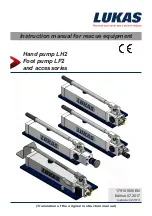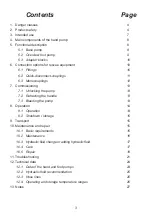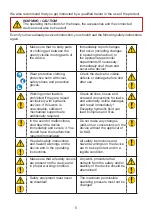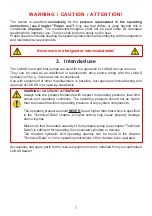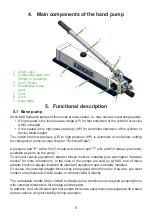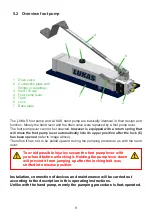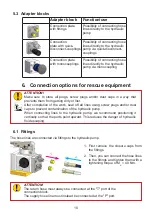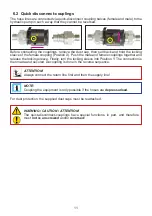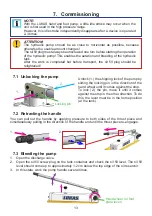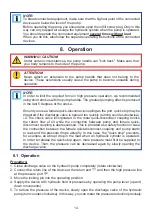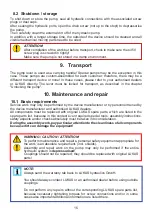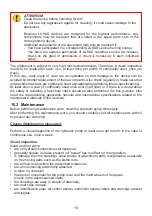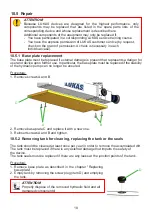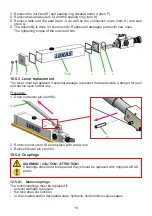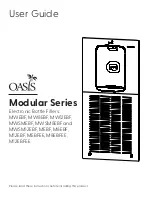
6
Before switching on/engaging
the device or while operating
the device, it must be ensured
that no one is endangered by
the operation of the device.
Observe all intervals that
are prescribed or specified
in the operating instructions
for recurring tests and/or
inspections.
When working in the vicinity
of live components and lines,
take appropriate measures for
preventing current transfers or
high voltage flashovers to the
device.
For repairs only original LUKAS
accessories and spare parts are
to be used.
Make sure that you do not
get caught in the hose loops
and trip when working with or
transporting the device.
Prevent electrostatic discharge,
which has the possible
consequence of spark
formation, when handling the
device.
When the hydraulic pumps are
set up, care needs to be taken
that they are not impaired by
extremely strong temperature
changes.
The device is filled with
hydraulic fluid. These hydraulic
fluids can be detrimental to
health if they are swallowed
or their vapours are inhaled.
Direct contact with the skin
should be avoided for the same
reason. Also, when handling
hydraulic fluids, note that they
can negatively affect biological
systems.
When operating and/or storing
the device, make sure that the
function and the safety of the
device are not impaired by
strong external temperature
differences or that the device is
damaged. Keep in mind that the
device can also heat up when it
is continuously used.
Make sure there is adequate
lighting while working.
Before transporting the device,
always check to see that the
accessories are positioned
securely to prevent the
possibility of an accident.
Always keep these operating
instructions easily accessible
at the site where the device is
used.
Make sure you properly dispose
of all removed parts, leftover
hydraulic fluid, leftover oil and
packing materials.
In addition to the safety instructions of these operating instructions, all generally applicable,
statutory and otherwise binding national and international rules for accident prevention need
to be heeded and disseminated!
Summary of Contents for 81-50-35
Page 2: ...2...
Page 27: ...27 13 Notes...

